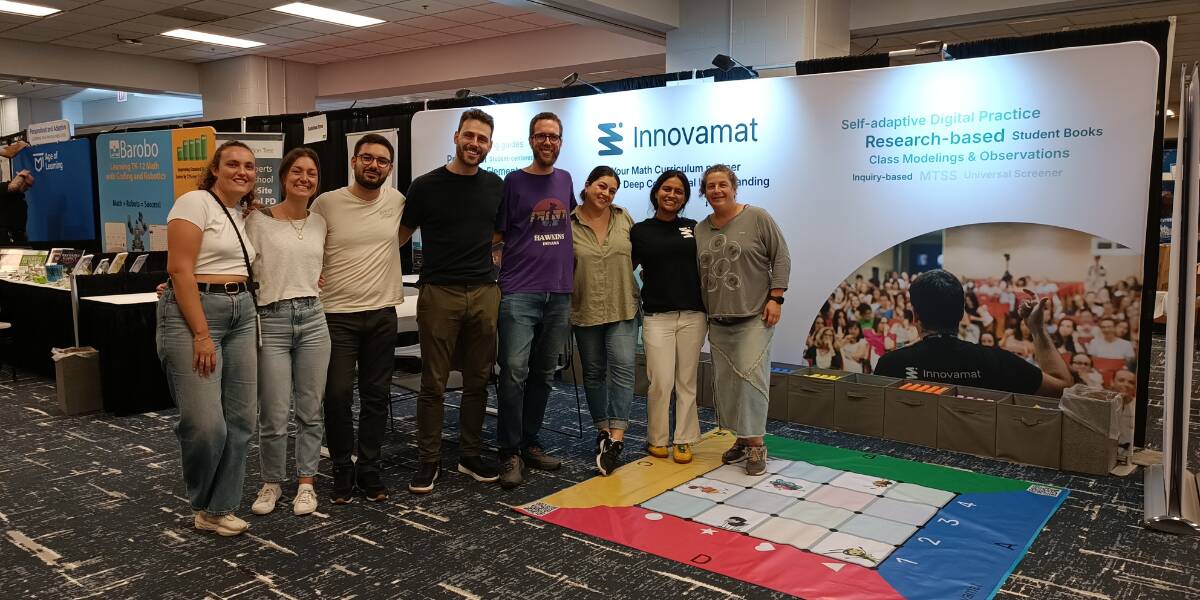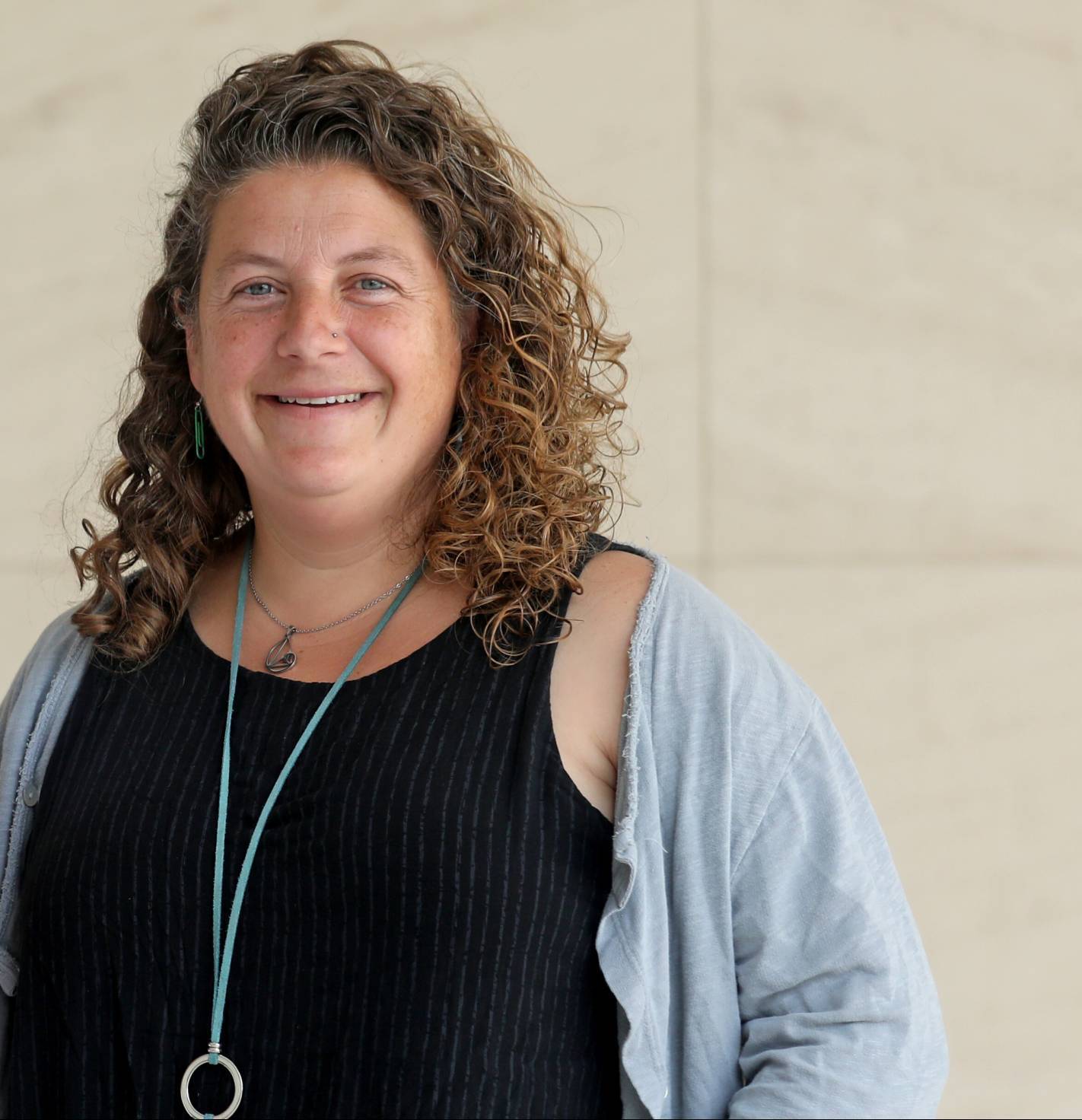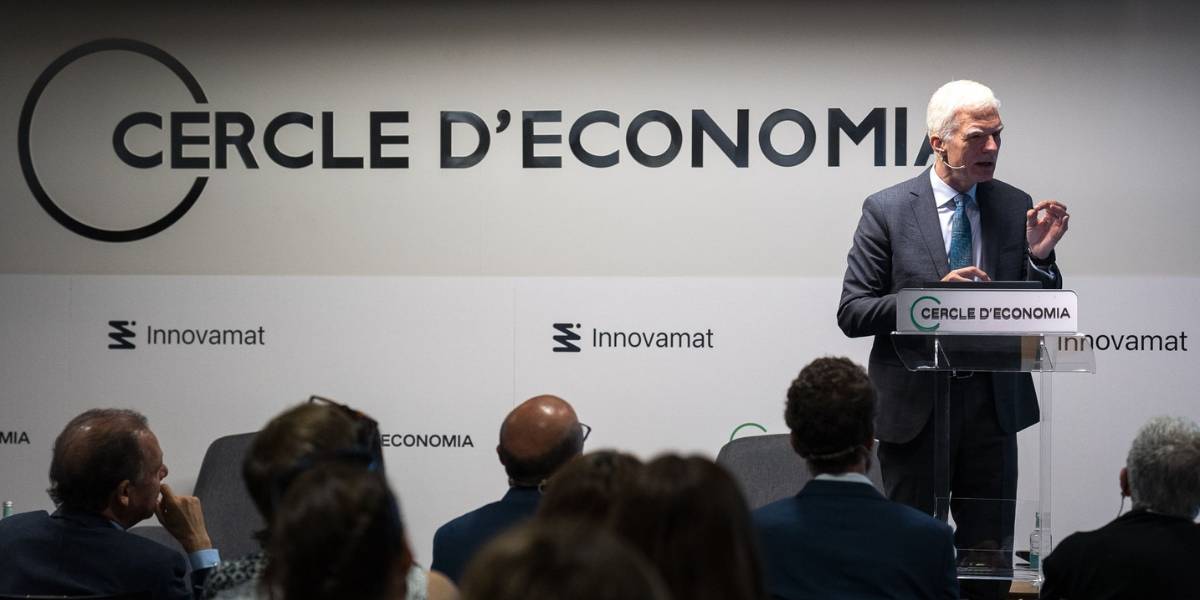Over the years, institutions around the world have contributed to educational research through their findings, insights, and concrete proposals for the classroom. At Innovamat, we are dedicated advocates of using research to enhance education. For this reason, many of these institutions are references and sources of the didactic principles of the curriculum.
Today, we want to discuss one of them, the NCTM (National Council of Teachers of Mathematics), in more detail. Read on to learn more about their contributions to the educational community.
What is the NCTM? It is the global benchmark in math education.
The NCTM is an American organization dedicated to improving math teaching and learning. Founded in 1920, it develops standards and teaching materials and organizes conferences and events to promote effective teaching of math at all levels.
The influence of NCTM extends beyond the US. Among all the initiatives they carry out, they organize an annual meeting where researchers and experts share the latest research results and all the innovations in the teaching of math. This is the annual meeting of the NCTM:
Annual meeting of the NCTM: A must-attend event for math teachers.
The annual NCTM Meeting is the premier event in the United States for the teaching and learning of mathematics. Each year, thousands of teachers, researchers, and experts from around the world gather to exchange the latest research and trends in math education.
The 2024 edition took place in September. Chicago played host to over 8,000 attendees, all eager to learn about all the latest developments. In fact, some members of our Education team went as well. Four days awaited us, packed with workshops and lectures from leading figures like Jennifer Bay-Williams, Peter Lidjedahl, Rachel Lamber, and many more!
And that’s not all! We seized the opportunity to become reporters ourselves, bringing you a summary of the trends and innovations across five key areas of mathematics education.
- Building Thinking Classroom
- Mathematical processes
- Mathematical content
- The socio-emotional dimension
- Teacher coaching
So, let’s get to it!


How to build deep learning classrooms where students think (Building Thinking Classrooms)
Do you know the concept of Building Thinking Classrooms? In recent years, it has become one of the most listened-to trends, thanks to Peter Lidjedahl’s book of the same name. This concept aims to promote classroom environments where students are actively engaged, thinking, and reasoning, with the goal of fostering a more positive attitude towards math.
This conviction to make students think was (is and will be) a very relevant topic, and there have been many conferences about it. We highlight one in particular: Reasoning Routines That Develop Individual and Collective Brilliance and Agency Through Discourse, by educators Amy Lucenta and Grace Kelemanik. In it, they emphasized the significance of creating reasoning routines to help students enhance their mathematical reasoning skills. In this way, we build habits of mathematical thinking rather than just obtaining the correct answers.
Putting the focus on mathematical processes
Another increasingly prominent topic is the focus on mathematical processes. In this section, we will list some of the conferences that interested us the most in this regard.
- Problem Solving
Howard “Howie” Hua’s The first day of School highlighted the importance of how we present problems to students to get them involved, especially during the first days of class. Howie emphasized that designing engaging activities is crucial to capturing student interest. He also highlighted how rich, thought-provoking questions can boost active participation and help students develop vital problem-solving skills.
- Connections
Concerning connections, we would like to highlight Graham Fletcher’s lecture Finding the Through Line: Intentionally Building Meaningful Connections Through Task Sequence. This lecture focuses on emphasizing the importance of deliberately organizing and selecting the tasks we present to our students. This way, they can relate their previous knowledge to new concepts, and thus encourage deeper learning, rather than presenting math as isolated topics.
- Reasoning and Proof
Do you know Jo Boaler? She is one of the most emblematic figures in learning math. Her presentation Math-ish. Enchant Your Students With the ‘ish’ Version of Maths!, focused on the conflict of fact vs fluency. That is, she made a distinction between mathematical fluency—which encourages flexible and deep understanding of numbers—and the simple rote memorization of math facts. Its objective was to highlight how teaching that prioritizes understanding, encourages more effective and equitable learning.
- Communication and Representation
Finally, we would like to highlight two conferences that the Innovamat Education team presented at the meeting. Both of them focused on the importance of the communication and representation process, as well as the need to analyze student representations.
In Beyond the Answer: Analyzing Representations to Understand Students’ Thinking, presented by Albert Vilalta and Laura Morera, we saw how to obtain evidence of our students’ abilities, such as their reasoning, the connections they make, and how they communicate, through their representations.
And The Blank Page: Students Representations of Mathematical Thinking, presented by Judith Fábrega, focused on the analysis of the creations of children on the blank page. Highlighting what could be seen at both the process and content levels.
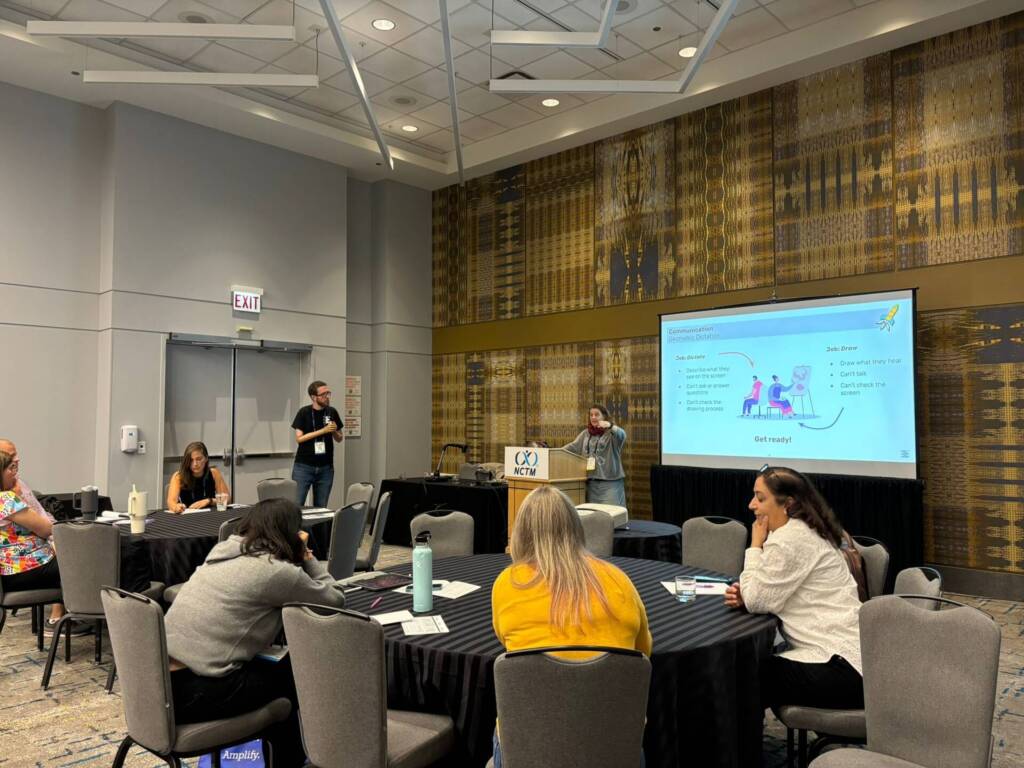

In terms of content, there are also new developments
Let’s not forget about the content! As a fundamental basis for learning math, there were lectures that introduced new developments. Two of the most recent topics incorporated into school math curricula are computational thinking and data science and statistics. Both contents will play a fundamental role in the (not-so-distant) future, which is why it’s important to start integrating them into student’s daily learning.
What about the socio-emotional dimension?
The meeting also discussed the socio-emotional dimension, a key component of teaching. Referring to the concept of Building Thinking Classrooms, the importance of creating a classroom environment that fosters active participation and engagement from all students was highlighted. This type of environment not only enhances students’ understanding of concepts but also fosters a sense of belonging within the classroom.
A frequently mentioned concept was equity. That is, it is essential that each student feels valued and capable of contributing to the class. To achieve this, all students must be genuinely engaged in their learning. When a classroom environment is created where everyone has the opportunity to share their ideas and perspectives, it fosters a sense of belonging and improves the understanding of the material.
Teacher coaching: a driver for excellence in math teaching
Finally, the importance of the role of teachers as guides and facilitators of knowledge was reaffirmed. Many of the lectures addressed the topic of Math coaching, specifically how to support teachers in applying strategies and classroom dynamics to unlock their students’ full potential.
They stressed that while some teachers are more receptive to change than others, it is critical that everyone works together, receives coaching, and aligns with the education community to ensure that students gain meaningful math learning.
See you next year!
In summary, this was just a glimpse of the many insights discussed. The NCTM Annual Meeting continues to be a crucial event for math teachers, providing a platform for exchanging ideas and best practices.
Throughout the sessions, key topics were addressed to improve mathematical teaching; such as the importance of encouraging mathematical thinking in students; the need to focus on mathematical processes to develop skills like problem-solving or the ability to make connections; and the integration of up-to-date content, such as computational thinking and data science.
Additionally, the relevance of the socio-emotional dimension was highlighted, creating inclusive environments that promote equity and active participation from all students. Lastly, teacher coaching was reaffirmed as a key driver for educational excellence, underscoring the need for collaborative and continuous learning among educators.
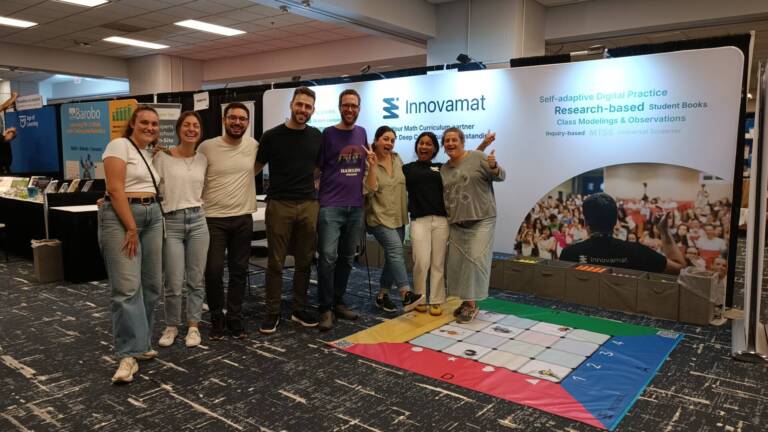
That’s the recap! We hope these trends are helpful in your day-to-day teaching. At Innovamat, we remain committed to these principles and strive to provide you with the tools and resources needed to achieve meaningful mathematical learning for your students.

